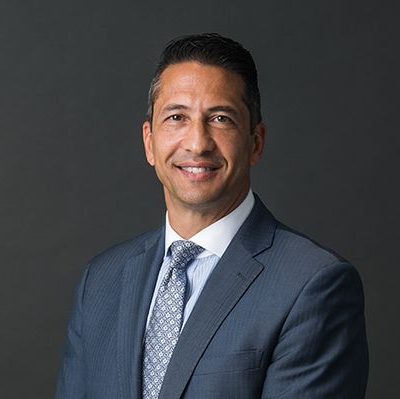Candidates for this year’s “black swan” keep pundits busy, including commercial real estate debt, geopolitical instabilities in Europe and Asia, a second round of the banking crisis and more, but the undeniable fact is that the markets have rallied throughout 2023, inflation dropped sharply and the Fed is over the runway on its much-doubted soft landing.
We must ask, “What if everything goes well for the economy and markets throughout 2023 and beyond?” That question leads us to look back to how things were different only a few years ago, when Warren Buffett advised that the average American should simply buy an S&P tracker and most investors could thrive with a portfolio of 60% stocks and 40% bonds, or a similar percentage balance of debt and equity.
The Strengths – And Weaknesses – Of The Traditional 60/40

Rob Conzo, CEO and Managing Director of RIA The Wealth Alliance, explains, “In 2022, when equity and bond asset classes pulled back, it made the 60/40 perform worse than it had in years prior. As such, the popularity for the 60/40 waned.”
The stumble of the 60/40 last year shed a negative light on the traditionally popular investment strategy. As Anna Rathbun, CIO of advisory services firm CBIZ Investment Advisory Services, describes, “The traditional equity/bond portfolio has been a mainstay in portfolio construction.”
Conzo points out that 2022’s low performance for the 60/40 and other equity/bond portfolios was not possible to predict. “Trying to determine when a 60/40 or other asset allocation is going to perform good or bad is a futile effort. In the 10 years through 2022, the annualized return for an average 60/40 portfolio was 6.1% according to Vanguard.”

Rathbun notes that one side of the 60/40 – bonds – changed over time. “When interest rates were near zero, and bonds were yielding little income, investors wondered if bonds were worth the trouble. Today, bonds provide better yields, and investors are enjoying the higher income as well as diversification away from stocks.”
While equity and debt “remain at the core of client businesses,” J.B. Sarra, Head of Distribution at TEMA ETFs, argues that the rapid rise in interest rates opened the door for alternatives. “With access to alternatives becoming easier for clients, we feel that a diversified portfolio may look more dynamic than the traditional 60/40 mix.”
If Great Things Happen, Stay Disciplined

In Sarra’s view, “If the current market rally persists, the traditional stock/bond allocation will likely remain the largest portion of client accounts. However, record interest rate levels are forcing clients to rethink their portfolio exposures and have driven client interest in adding more defensive exposures. We see this as a major tailwind for actively managed ETFs.”
Rathbun cautions that rosy outlooks could cause investors to ignore the benefits of diversification. In the stated scenario, “a 60/40 portfolio would participate on the upside but would lag the S&P 500 Index. In such a situation, it is important not to develop FOMO and to remember the benefits of being diversified – when stocks fall, the bonds can help to dampen the downside risk.”
“With the recent rise in the equity markets, people have seen their portfolios increase in value. As such, the 60/40 has once again become a more popular tool for investment purposes,” notes Conzo. Like Rathbun, he cautions investors to maintain discipline. “The 60/40 and other asset allocation models allow investors to stay more focused on being invested and less about market timing.”
The Role Of Alts In A Positive Future
In a scenario without recession but with continued high interest rates, Sarra says alts will “retain interest. We would expect higher cash yields to be a lift for the sector broadly. The renewed market volatility and greater risks resulting from tighter monetary policy will create a greater opportunity for managers to outperform.”
Sarra spotlights certain alts as performing especially well in these conditions. “Alternatives delivered in vehicles such as the ETF, that provide more investor-friendly access and can live easily alongside the traditional 60/40 portfolios, will likely be some of the biggest beneficiaries.”
Conzo points to the role of alts in diversification. “The purpose of alternative investments and asset allocation in general is to further diversify a portfolio, thereby lowering fluctuations and creating a more consistent return. Trying to predict whether alternative investments or other asset classes will do well or not is difficult at best.”
Conzo continued, “Being diversified, rebalancing portfolios and staying invested rather than trying to predict future markets, can be a more productive use of investors’ time.”
“The success of private investing is dependent on prudent manager selection,” says Rathbun, presenting a nuanced view on the future of alts. “The dispersion of returns for private investing is wide enough to drive a truck through, and the ability of the advisor to choose a high-quality private manager is a reliable indicator to the success of adding private investments to a portfolio.”
Index Tracking Has A Place Going Forward – With Limits
“The recovery we have seen in major indices in the first half of 2023 has strengthened the argument that index investments still belong in client portfolios,” says Sarra, but he explains that “over the longer term we feel that the active ETF space will grow at a faster rate. In a more volatile, risky environment, some of the limitations of indexation have become apparent and underscore that not all strategies can be accessed effectively through indices.”
Similarly, Rathbun expresses caution against relying on index funds in good times. “Portfolios should be built for the long term and within the context of life situations of the family/individual. The goal of investing is not to beat the S&P 500 Index, but to help support the goals of each family.”
Conzo believes that index strategies are an effective tool for portfolios, but the situation contains more complexity than simply tracking an index. “Indexes have a place within a portfolio, but like many investment methodologies, one size does not fit all. Being diversified between active and passive indices may create a portfolio which captures different aspects of investing. In recent years, indexing products have morphed into hybrid methodologies including an aspect of active management (e.g., tax-loss harvesting).”
Janeesa Hollingshead, Contributing Editor at Wealth Solutions Report, can be reached at editor@wealthsolutionsreport.com.














